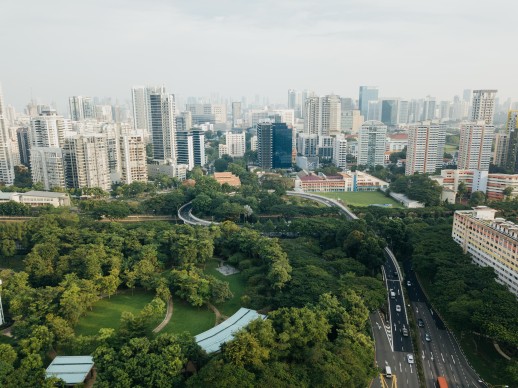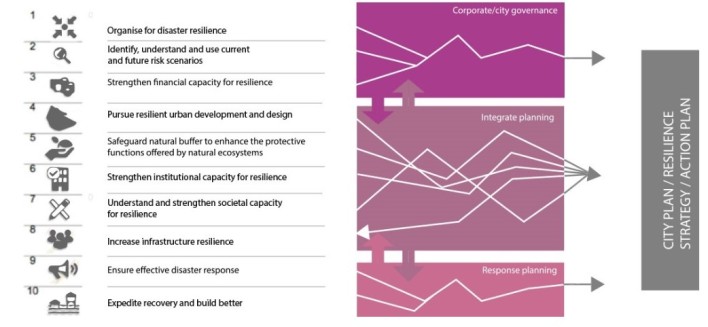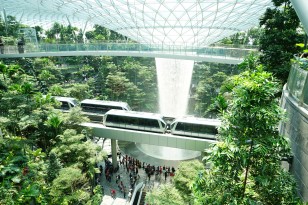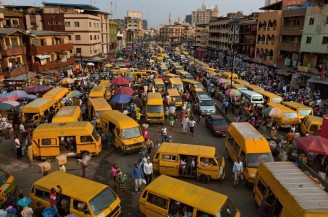Blog / Leadership & Transformation
Urban Resilience: Building Sustainable and Future-Proof Cities
Categories

Urban Resilience: Building Sustainable and Future-Proof Cities
Have you ever wondered what it takes to build resilient cities that can withstand the challenges of the future? In today's rapidly changing world, urban resilience has become a crucial concept in smart city management. In this article, we'll explore the meaning of urban resilience and how it can be built to create sustainable and future-proof cities.
What is Urban Resilience?
Urban resilience refers to the capacity of a city to bounce back from and adapt to various shocks and stresses, such as natural disasters, economic downturns, and social challenges. It involves the ability of a city to absorb, recover, and transform in the face of these challenges while maintaining essential functions and supporting the well-being of its residents.
Let’s check out 3 definitions from different international sources:
UN HABITAT: The measurable ability of any urban system, with its inhabitants, to maintain continuity through all shocks and stresses, while positively adapting and transforming toward sustainability. From earthquakes to flooding, rapid immigration to cyber-attacks, all cities face a range of shocks and stresses, natural and human-made. Today, cities and inhabitants face additional and amplified challenges due to rapid urbanization, a changing climate, and political instability, among others. Source: Urban Resilience Hub.
UNITED NATIONS OFFICE FOR DISASTER RISK REDUCTION (UNISDR): The ability of a hazard-exposed system, community, or society to resist, absorb, adapt, transform, and recover from the effects of a hazard in a timely and efficient manner, including the preservation and restoration of its essential basic structures and risk management. Source: UNDRR
100 RESILIENT CITIES: Resilience is about surviving and thriving, regardless of the challenge. Urban resilience is the capacity of individuals, communities, institutions, businesses, and systems within a city to survive, adapt, and grow no matter what kinds of chronic stresses and acute shocks they experience.
CHRONIC STRESSES: weaken the fabric of a city on a day-to-day or cyclical basis. Examples include: high unemployment, inefficient public transportation systems, endemic violence, and chronic food and water shortages.
ACUTE SHOCKS: these are sudden, sharp events that threaten a city. Examples include: earthquakes, floods, disease outbreaks, and terrorist attacks.
Source: The Rockefeller Foundation

How Do You Build Urban Resilience?
Building urban resilience requires a holistic and proactive approach that encompasses various aspects of city planning and management. Here are some key strategies and factors to consider:
Integrated Planning: Effective urban resilience starts with integrated planning that considers multiple sectors, including infrastructure, housing, transportation, and social services. It involves collaboration among city stakeholders, policymakers, and community members to identify vulnerabilities, set goals, and implement resilient solutions.
Risk Assessment and Management: Conducting comprehensive risk assessments is crucial to understand the potential hazards a city may face. This includes analyzing climate change risks, assessing vulnerabilities, and developing risk management plans. By identifying potential risks, cities can implement appropriate measures to mitigate and adapt to them.
Infrastructure Resilience: Strong and resilient infrastructure is essential for urban resilience. This includes designing and constructing buildings, roads, bridges, and utilities that can withstand natural disasters and other threats. Integrating smart technologies into infrastructure systems can also enhance resilience by enabling real-time monitoring and response.
Community Engagement: Engaging and empowering the local community is a vital aspect of building urban resilience. Communities play a significant role in disaster preparedness, response, and recovery. By involving residents in decision-making processes, fostering social cohesion, and promoting knowledge-sharing, cities can enhance their resilience.
Characteristics of resilient systems
It is not enough to understand the systems of a city. To build resilience, those systems must be designed and operated in ways that can more easily resist, respond
and adapt to shocks and stresses.
There are 7 characteristics that city systems need in order to built resilience:
Reflective: Individuals and institutions that are reflective use past experience to inform future decisions, and will modify standards and behaviours accordingly. For example, planning processes that are reflective are better able to respond to changing circumstances.
Resourceful: Resourceful people and institutions are able to recognize alternative ways to use resources at times of crisis to meet their needs or achieve their goals. For example, although households in cities in Chile’s Central Valley use water provided by municipal networks on a daily basis, the service is often interrupted after strong earthquakes. As a response, many households maintain wells to continue the provision of water.
Robust: Robust design is well-conceived, constructed, and managed and it includes making provisions to ensure failure is predictable, safe, and not disproportionate to the cause. For example, protective infrastructure that is robust will not fail catastrophically when design thresholds are exceeded.
Redundant: Redundancy refers to spare capacity purposefully created to accommodate disruption due to extreme pressures, surges in demand, or an external event. It includes diversity where there are multiple ways to achieve a given need. For example, energy systems that incorporate redundancy provide multiple delivery pathways that can accommodate surges in demand or disruption to supply networks.
Flexible: Flexibility refers to the willingness and ability to adopt alternative strategies in response to changing circumstances or sudden crises. Systems can be made more flexible by introducing new technologies or knowledge, including recognizing traditional practices. For example, in times of crisis, cities may redeploy public buses for emergency evacuations.
Inclusive: Inclusive processes emphasise the need for broad consultation and ‘many seats at the table’ to create a sense of shared ownership or a joint vision to build city resilience. For example, early warning reaching everyone at risk will enable people to protect themselves and minimise loss of life and property.
Integrated: Integrated processes bring together systems and institutions and can also catalyse additional benefits as resources are shared and actors are enabled to work together to achieve greater ends. For example, integrated city plans enable a city to deal with multidisciplinary issues like climate change, disaster risk reduction, or emergency response through coordination.
Tools for urban resilience
In order to design resilience strategies there are a variety of instruments that allow us to diagnose cities, plan and concrete actions and finally be able to evaluate them in order to make the necessary corrections and improvements
CITY RESILIENCE PROFILING TOOL: The CRPT provides cities the necessary framework to evaluate urban resilience and develop Actions for Resilience tailored to their city and taking into account existing plans and processes.
CITY DISASTER RESILIENCE SCORECARD FOR CITIES: The Scorecard provides a set of assessments that allow local governments to monitor and review progress and challenges in the implementation of the Sendai Framework for Disaster Risk Reduction: 2015-2030, and assess their disaster resilience. It is structured around UNISDR’s Ten Essentials for Making Cities Resilient.
QUICK RISK ESTIMATION (QRE): The Quick Risk Estimation (QRE) tool has been designed for the purposes of identifying and understanding current and future risks / stresses / shocks and exposure threats to both human and physical assets. The QRE Tool is not a full scale risk assessment, but rather a multi-stakeholder engagement process to establish a common understanding. Taking into account the actions or corrective measures already undertaken, the QRE will produce a dashboard-style risk assessment advising the risks and hazards to human and physical assets, impacts of identified main risks, and associated perils on the specified location and/or particular asset.
A CITY DEVELOPMENT STRATEGY (CDS): A tool to identify and understand current and future risks / stresses / shocks and exposure threats to both human and physical assets. A City Development Strategy (CDS) is a tool that helps a city harness the potential of urbanisation through strategic planning. It is an action-oriented process, developed and sustained through participation, to promote equitable growth in cities and their surrounding regions to improve the quality of life for all citizens.
RESILIENCE. IO: Resilience.io is an open-source, cloud-based, scalable city-regional software platform linked to earth systems models. It enables communities anywhere to gather earth observation, economic, social, and environmental data in a crowd-sourced manner and build a dynamic 3D systems visualisation of their region, land, and sea.
CITYSTRENGTH DIAGNOSTIC: The CityStrength Diagnostic was developed as a means of engaging with cities on the complex issue of resilience by using a holistic approach to identifying priority actions and investments to strengthen urban systems. The methodology first evaluates resilience on a sectoral basis and then brings together the findings to think holistically about the city’s resilience.
CITY RESILIENCE INDEX: The City Resilience Index provides cities with a comprehensive, accessible, technically robust, and globally applicable basis for assessing and measuring resilience at a city scale. It comprises 58 resilience indicators assessed through 156 questions, drawing upon both qualitative and quantitative data.
Urban Resilience Projects and Examples
Numerous cities around the world have embarked on urban resilience projects to create sustainable and future-proof urban environments. Here are some inspiring examples:
Rotterdam, Netherlands: Rotterdam is known for its innovative approaches to urban resilience. The city has implemented a multifaceted strategy, including water management solutions, climate adaptation measures, and sustainable infrastructure development. They have transformed their vulnerability to flooding into an opportunity for economic growth and sustainable development.
Singapore: Singapore is widely recognized for its commitment to urban resilience and sustainability. The city-state has integrated smart technologies, green infrastructure, and efficient public transportation systems to enhance resilience. Singapore's efforts have resulted in a highly livable and environmentally sustainable city.
Portland, United States: Portland has prioritized urban resilience by focusing on sustainable land use planning, transportation options, and renewable energy. The city has also engaged its community in resilience-building initiatives, including neighborhood-level resilience hubs and emergency preparedness programs.
Rio de Janeiro, Brazil: Rio de Janeiro proposes to use 3D laser scanning technology, to analyze urban conditions in the favelas, and create a digital map that can help quantify public health risks and generate data for future policy decision-making. Rio's idea is compelling because, without this critical data, the city cannot implement sustainable solutions for the 1.5 million people who live in favelas, which are communities that have been hit particularly hard disasters and crisis.
Urban Resilience and Sustainability
Urban resilience and sustainability go hand in hand. Resilient cities are not only able to withstand shocks and stresses but also prioritize environmental, social, and economic sustainability. By integrating sustainable practices into urban planning and development, cities can enhance their resilience and ensure a better quality of life for their residents.
Urban Resilience Strategy
Developing an urban resilience strategy is crucial for cities aiming to build resilience. This strategy should encompass short-term and long-term goals, specific action plans, and performance indicators. It should also involve ongoing monitoring, evaluation, and adaptation to address evolving challenges and opportunities. Here are key elements to consider when formulating an urban resilience strategy:
Assessment and Analysis: Begin by conducting a comprehensive assessment of the city's vulnerabilities, risks, and existing resilience measures. This analysis will help identify priority areas and set the foundation for the strategy.
Set Goals and Objectives: Define clear and measurable goals that align with the city's vision for resilience and sustainability. These goals may include enhancing infrastructure resilience, improving social cohesion, promoting sustainable resource management, and fostering economic stability.
Collaboration and Partnerships: Building resilience requires collaboration among various stakeholders, including government agencies, community organizations, businesses, and academia. Foster partnerships and engage stakeholders in the strategy development process to leverage collective knowledge, resources, and expertise.
Integrated Planning and Policy: Ensure that the resilience strategy is integrated into the city's overall planning and policy framework. Incorporate resilience considerations into land use planning, transportation strategies, housing policies, and disaster response plans. This integrated approach ensures that resilience becomes a core principle across all sectors.
Investment and Financing: Identify potential funding sources, both public and private, to support the implementation of resilience projects and initiatives. Seek innovative financing mechanisms and explore partnerships with international organizations or funding agencies to secure resources for long-term resilience investments.
Capacity Building and Education: Invest in capacity building programs to enhance the knowledge and skills of city officials, urban planners, and community members in resilience planning and implementation. Promote education and awareness campaigns to empower residents with the necessary information and tools to contribute to resilience efforts.
Monitoring and Evaluation: Establish a robust monitoring and evaluation framework to track the progress of the resilience strategy. Regularly assess the effectiveness of implemented measures, identify gaps or challenges, and adapt the strategy accordingly. This iterative process ensures continuous improvement and adaptability to changing circumstances.
Conclusion
In an increasingly complex and uncertain world, urban resilience is essential for cities to thrive and withstand future challenges. By embracing the principles of urban resilience, cities can enhance their capacity to adapt, bounce back, and create sustainable, livable environments for their residents.
Through integrated planning, community engagement, and strategic investments, cities can build resilient infrastructure, foster social cohesion, and promote sustainable practices. By adopting a long-term perspective and considering the interconnectedness of social, economic, and environmental factors, cities can pave the way for a resilient and prosperous future.
Urban resilience is an indispensable approach for cities to build sustainable and future-proof environments. By embracing integrated planning, community engagement, and strategic investments, cities can enhance their capacity to adapt, withstand shocks, and create livable spaces for their residents.
Resilient infrastructure, social cohesion, and sustainable practices are crucial pillars in this endeavor. Moreover, adopting a long-term perspective and fostering collaboration among diverse stakeholders further strengthen the resilience of cities. As the world becomes increasingly complex and uncertain, urban resilience provides a roadmap for cities to thrive, navigate challenges, and pave the way for a prosperous and sustainable future for all. By prioritizing resilience, cities can transform into vibrant and resilient hubs that flourish amidst change, benefiting both current and future generations.
Get the knowledge to design sustainable and resilient cities
As we look ahead to the challenges of the future, one thing becomes abundantly clear: building sustainable and resilient cities is not merely an option, but an imperative.
Urban resilience is the key to safeguarding our communities against the unpredictable forces of nature, social complexities, and technological advancements. The vision of a smarter, greener, and future-proof urban landscape is within reach, and it starts with gaining the right knowledge and expertise.
Our Master's in Global Smart City Management equips aspiring urban planners, innovators, and change-makers with the necessary skills to address urban challenges and urban resilience head-on. Chek it out!





